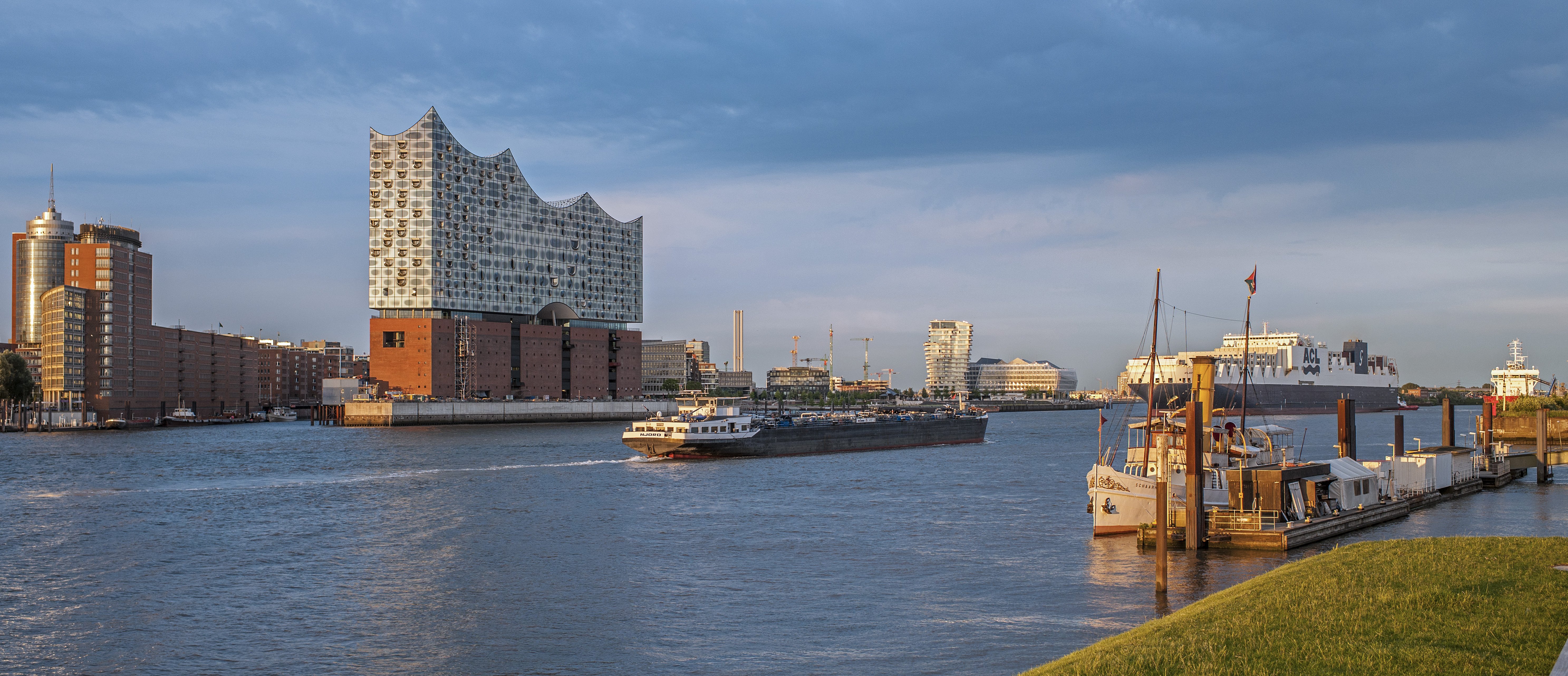Elbphilharmonie
The Elbphilharmonie is a striking glass-faced building on its way to becoming a hallmark symbol for the maritime metropolis of Hamburg, Germany.
Under its unique flowing roof, it houses two concert halls, apartments, and even a hotel. The Greater Hall features seating for 2,100 concert patrons. “The Elbphilharmonie borrows elements from three main archetypes: the ancient Theater of Delphi, modern athletic stadium-design, and the humble tent,” according to Architects Jacques Herzog and Pierre de Meuron.
It is located in Hamburg's new HafenCity district, south of downtown Hamburg and Europe's largest urban development project. The 157 hectare HafenCity encompasses ten highly diverse neighbourhoods that offer an expanded range of attractive commercial, residential, and cultural space adjacent to central Hamburg. To date, 59 projects have already been realised, with another 53 on the way. The district stretches from the Elbphilharmonie at the top of the Dalmann Quai to Ericus Point, home of popular tabloid publisher Spiegel Group. The charm of the new development is its ubiquitous relationship to water: including the River Elbe, harbour basins, and canals.
The island location presented the development companies with major challenges. Narrow streets, too few bridges, and numerous construction sites in various states of completion led to substantial traffic problems. Alone the renovation of the former warehouse complex that became the Elbphilharmonie produced an amazing 18,000 m3 of demolition waste.
TBH Transportbeton Hamburg, in which HeidelbergCement is an investor, supplied roughly 30,000 m3 of ready-mixed concrete for the pillars, walls, and ceilings. The company reacted to the traffic and location situation by setting up a dedicated concrete plant on the site of the HafenCity construction material terminal of partner investor OAM. The shortened transport routes enabled prompt and efficient deliveries to the various construction sites.
Because the Elbphilharmonie building sits at the very end of Dalmann Quay, deliveries of ready-mixed concrete were only possible from the eastern side. And, given the full building height of more than 100 metres, with the 30 metre outer walls of the quay warehouse that were retained and restored underneath the glass-faced crown, it was impossible to work with conventional concrete pump technology. Heidelberger Beton GmbH thus worked together with general contractor Hochtief Construction AG to develop a solution: By using a specially designed mobile pump from Putzmeister, it was possible to pump the concrete high enough to have it available where needed. This also involved detaching the distributor mast from the pump and fastening it at the top of the building, with the pump on the ground. The distributor mast was connected to the pump via ground and vertical pipes. In order to reach all areas of the site with the 24 metre boom, it was necessary to install three different pipe feeds; depending on where the material was required, the mast could be detached in just two hours. This solution resulted in a pump system with a range of up to 180 metres.
TBH delivered Easycrete® F and Easycrete® SF, two ready-mixed concrete types perfect for this system: “Especially inside the concert halls, with their finely contoured elements and inclined walls – where it is nearly impossible to compact concrete by vibration – concretes with high flow rates were particularly helpful,” explains Nils Hilbert from TBH. “This also ensured that the concrete arrived at the place of application in the right consistency after being pumped such a long distance.”
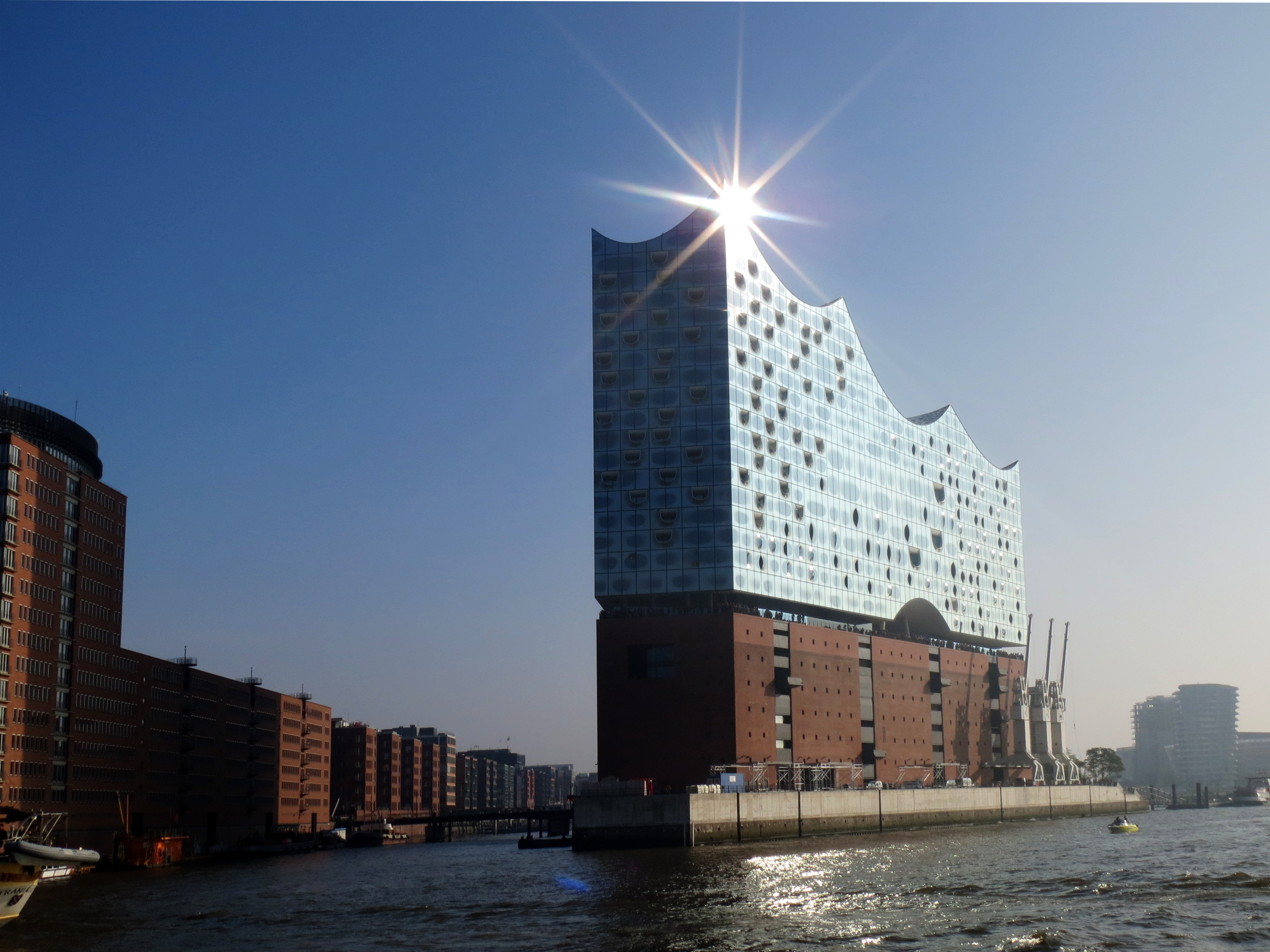
Elbphilharmonie.
Beatrix Immig
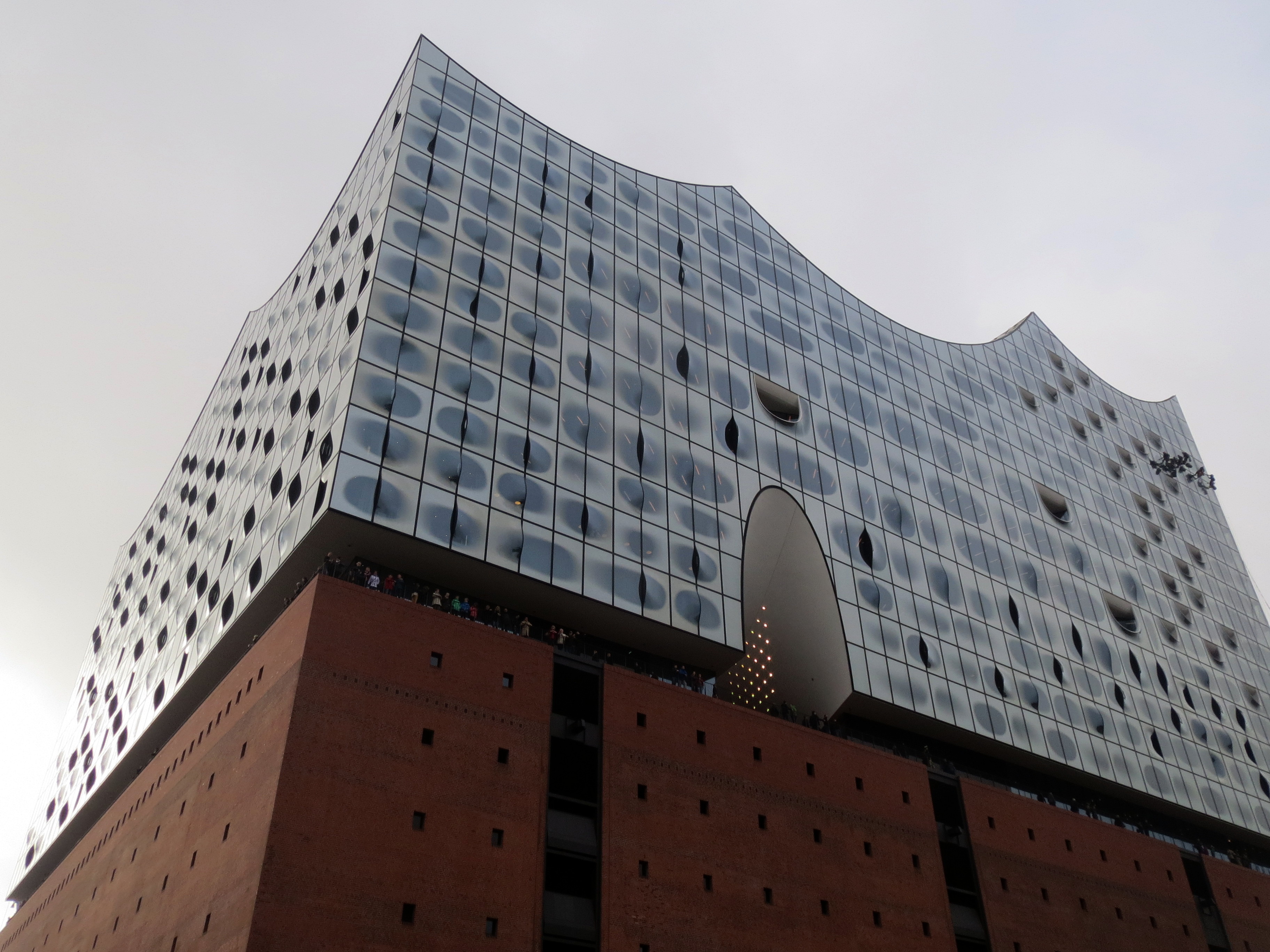
Elbphilharmonie.
Beatrix Immig

Elbphilharmonie.
Beatrix Immig
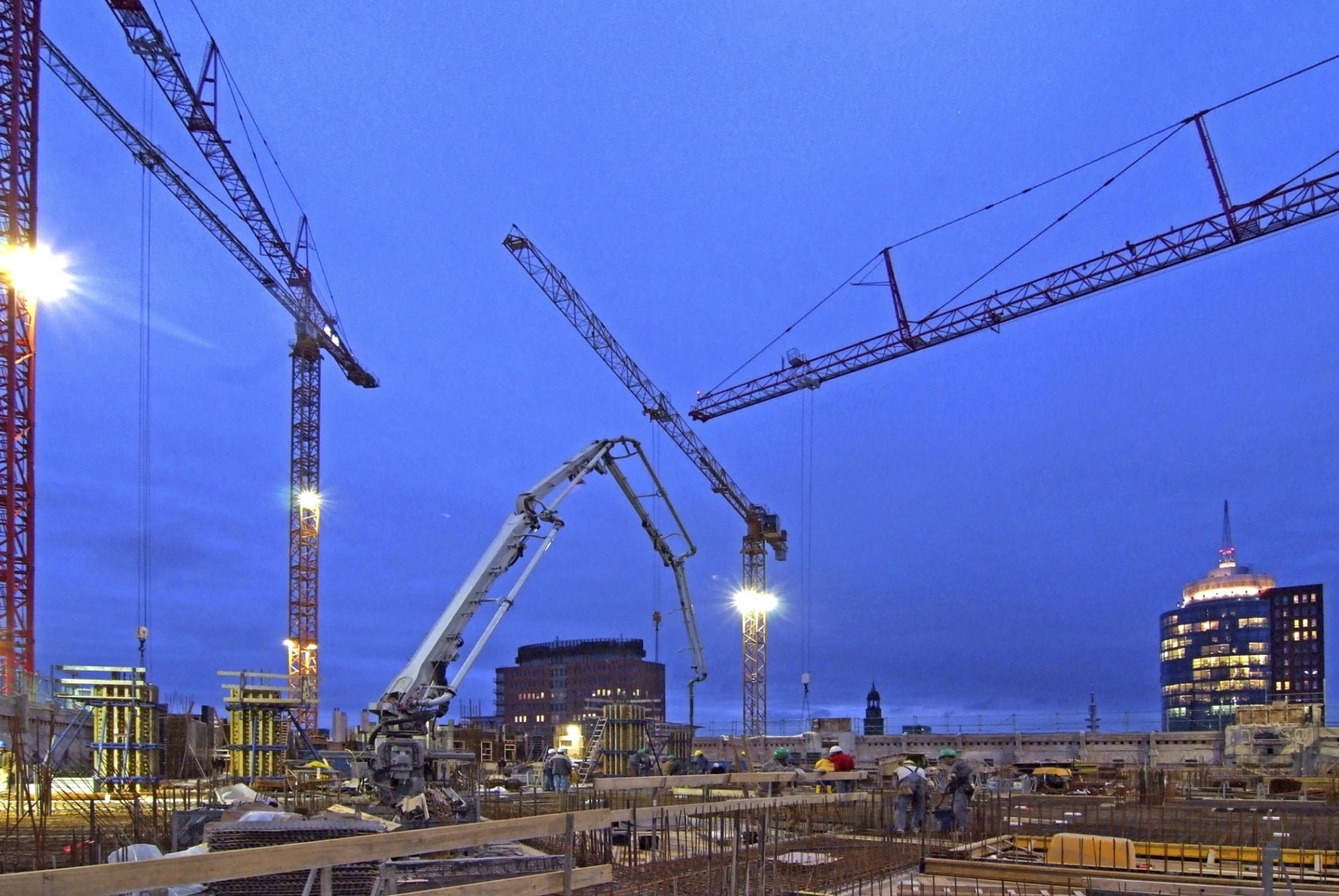
Elbphilharmonie, Germany.
HeidelbergCement AG / Steffen Fuchs
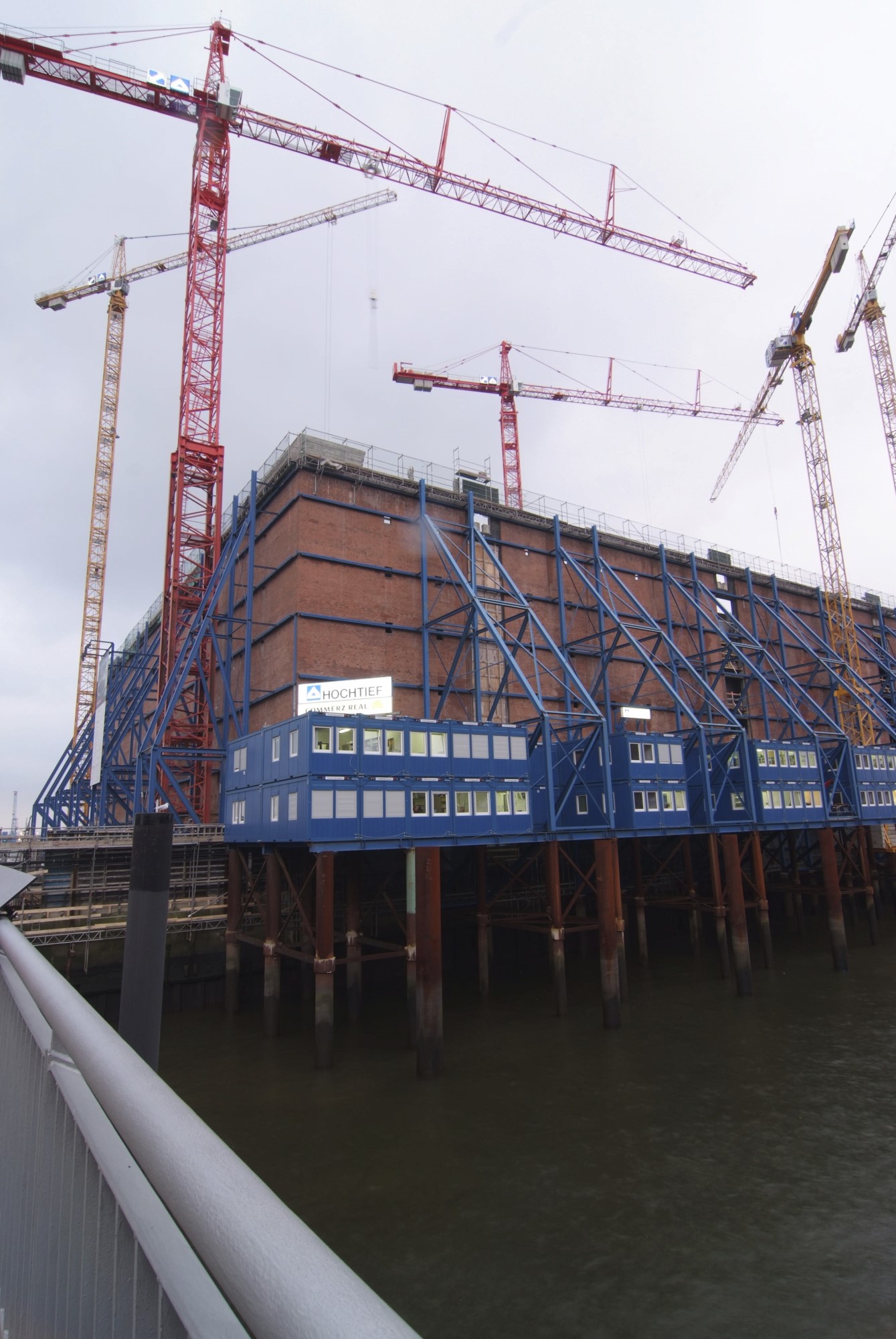
Elbphilharmonie, Germany.
HeidelbergCement AG / Steffen Fuchs

Elbphilharmonie.
Beatrix Immig

Elbphilharmonie.
Beatrix Immig

Elbphilharmonie.
Beatrix Immig

Elbphilharmonie, Germany.
HeidelbergCement AG / Steffen Fuchs

Elbphilharmonie, Germany.
HeidelbergCement AG / Steffen Fuchs

